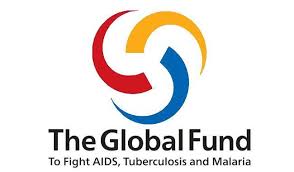By Dr. Mohammed Yassin – Senior TB Advisor, the Global Fund
It appears new, life-changing technologies come on the scene more and more with each passing year.
In November 2022, the artificial intelligence (AI) tool ChatGPT dominated global headlines; by January 2023, the digital application had more than 100 million users and dozens of imitators. AI consumed world leaders at COP28 and the 2024 World Economic Forum in Davos.
Tools such as AI – developed by private sector partners and harnessed by governments and civil society partners – could redefine how we tackle climate change and economic inequality.
Can they change the way we fight deadly, infectious diseases – and reach those whose need is greatest with lifesaving care?
They can, and they are.
Tuberculosis (TB) is a preventable, curable disease that kills more than 3,000 people every day. We know how and why TB spreads; existing treatment regimens are highly effective, and more and better medicines are being introduced in countries around the world. Still, in 2022 alone, TB killed 1.3 million people worldwide.
This cannot continue.
In countries where the Global Fund invests, public and private sector partners are working with communities to develop and utilize innovative tools and fight back – knocking down barriers that stand in the way of ending TB.
On a recent trip to Bangladesh, I met a team of health care providers from public, private and community partners who use digital X-rays with AI and telemedicine to rapidly screen people for TB. Patients with X-ray findings submit sputum samples onsite for testing and receive treatment at the community level. These services are provided free of charge.
Scenes like this are playing out around the world.
In Pakistan’s Punjab province, Mercy Corps uses AI to identify “hot spots” – remote or rural locations where people with TB might go undetected – and organizes mobile health camps that bring TB services to people’s doorsteps.
In the Penal Padre de la Vega in Paraguay, health care workers pair Fujifilm ultralight portable X-ray machines and AI technology to quickly screen and more accurately diagnose people with TB so they can be treated and avoid spreading the disease.
In Cambodia, doctors at the National Center for Tuberculosis and Leprosy Control carry portable Delft X-rays to nearby provinces to screen people who can’t make the journey to the capital, Phnom Penh.
And in Indonesia, a new partnership between the Global Fund, Siemens Healthineers and the country’s National TB program aims to scale up active case finding by applying deep learning AI technology to X-rays and allowing trained radiologists to read scans remotely so that more people in more places can be screened, diagnosed and treated for TB.
Focused, innovative interventions like these can help overcome persistent inequities that drive disease: poverty, displacement due to conflict and catastrophic weather, crowded living conditions, lack of time and access to health facilities.
They also lay the groundwork for resilient health systems that meet every person’s needs.
Pakistan’s mobile health camps offer basic health services, particularly for women and young children, above and beyond TB screenings. Access to X-rays in Paraguay’s prisons helps mitigate the alarming risk of TB associated with prison environments. Cambodia’s “double XX” strategy – an X-ray paired with a sputum sample tested by a GeneXpert platform – quickly detects people with TB that might otherwise slip through the cracks.
These stories also underscore the vital importance of cooperation among companies, industry leaders, governments and local health providers to find creative solutions to solvable problems.
TB is a solvable problem.
The Global Fund provides the largest share – 76% – of all international financing for TB. The Global Fund is also one of the largest multilateral investors in digital health. The partnership dedicates more than US$150 million per year to new digital tools that can help achieve equity and reach communities in the most remote locations.
But we need more.
We need committed partners that help us imagine and develop cutting-edge health tools to drive progress on ending TB around the world.
We need to continue engaging meaningfully with communities to find tailored interventions that are effective, sustainable, and help them prepare for other health threats such as pandemics and antimicrobial resistance.
In our ever-evolving world – filled with new ideas and emerging technologies that were unimaginable a few short years ago – all this is possible.
Together, we can end TB. For good.




0 Comments